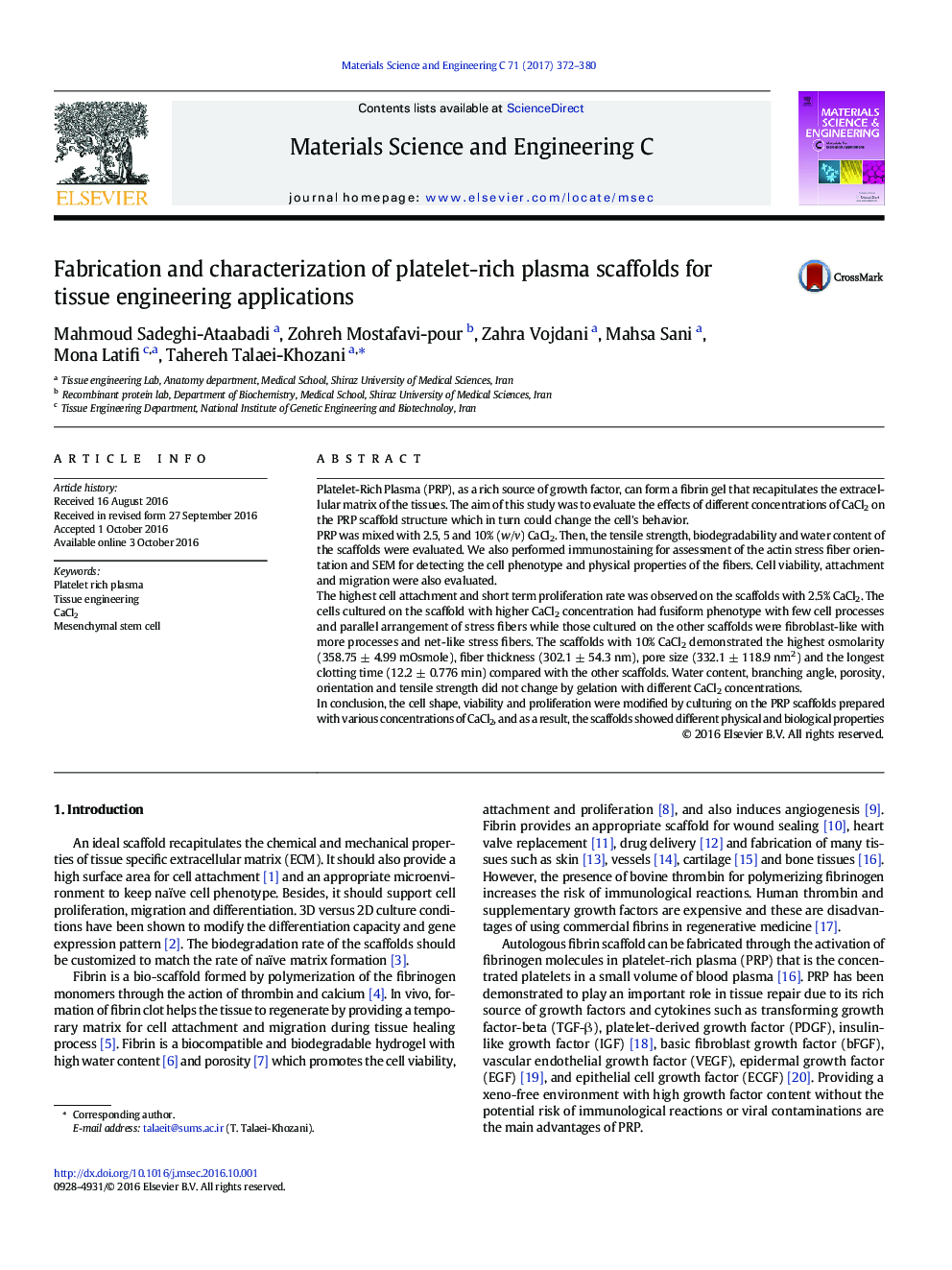| کد مقاله | کد نشریه | سال انتشار | مقاله انگلیسی | نسخه تمام متن |
|---|---|---|---|---|
| 5434641 | 1509150 | 2017 | 9 صفحه PDF | دانلود رایگان |
Platelet rich plasma (PRP) can be considered as an autologous source for tissue engineering applications. Cell shape, function and differentiation fate are influenced by the mechanical and physical features of the scaffolds. Different CaCl2 concentrations modified some features of the PRP scaffolds including:
- The scaffolds fabricated by 2.5% CaCl2 had a higher degradation rate and initial cell attachment property.
- The highest cell viability was on the scaffolds with 2.5% CaCl2 due to higher degradation rate and initial cell attachment.
- The stress fiber arrangement and as a result, cell phenotype modified by changing the physical properties of the scaffolds.
- The fiber thickness, orientation, porosity, pore size, branching angle, water content and mechanical strength were the same.
Platelet-Rich Plasma (PRP), as a rich source of growth factor, can form a fibrin gel that recapitulates the extracellular matrix of the tissues. The aim of this study was to evaluate the effects of different concentrations of CaCl2 on the PRP scaffold structure which in turn could change the cell's behavior.PRP was mixed with 2.5, 5 and 10% (w/v) CaCl2. Then, the tensile strength, biodegradability and water content of the scaffolds were evaluated. We also performed immunostaining for assessment of the actin stress fiber orientation and SEM for detecting the cell phenotype and physical properties of the fibers. Cell viability, attachment and migration were also evaluated.The highest cell attachment and short term proliferation rate was observed on the scaffolds with 2.5% CaCl2. The cells cultured on the scaffold with higher CaCl2 concentration had fusiform phenotype with few cell processes and parallel arrangement of stress fibers while those cultured on the other scaffolds were fibroblast-like with more processes and net-like stress fibers. The scaffolds with 10% CaCl2 demonstrated the highest osmolarity (358.75 ± 4.99 mOsmole), fiber thickness (302.1 ± 54.3 nm), pore size (332.1 ± 118.9 nm2) and the longest clotting time (12.2 ± 0.776 min) compared with the other scaffolds. Water content, branching angle, porosity, orientation and tensile strength did not change by gelation with different CaCl2 concentrations.In conclusion, the cell shape, viability and proliferation were modified by culturing on the PRP scaffolds prepared with various concentrations of CaCl2, and as a result, the scaffolds showed different physical and biological properties
266
Journal: Materials Science and Engineering: C - Volume 71, 1 February 2017, Pages 372-380
